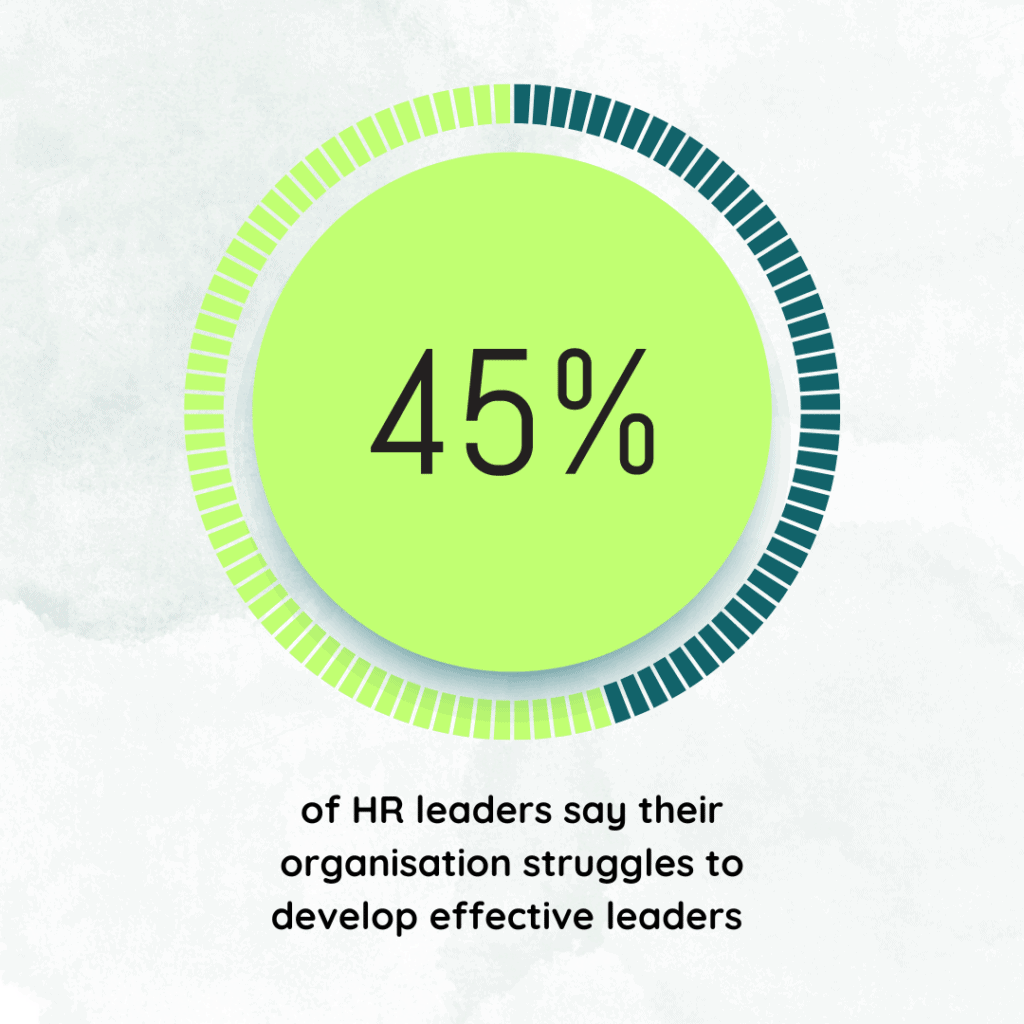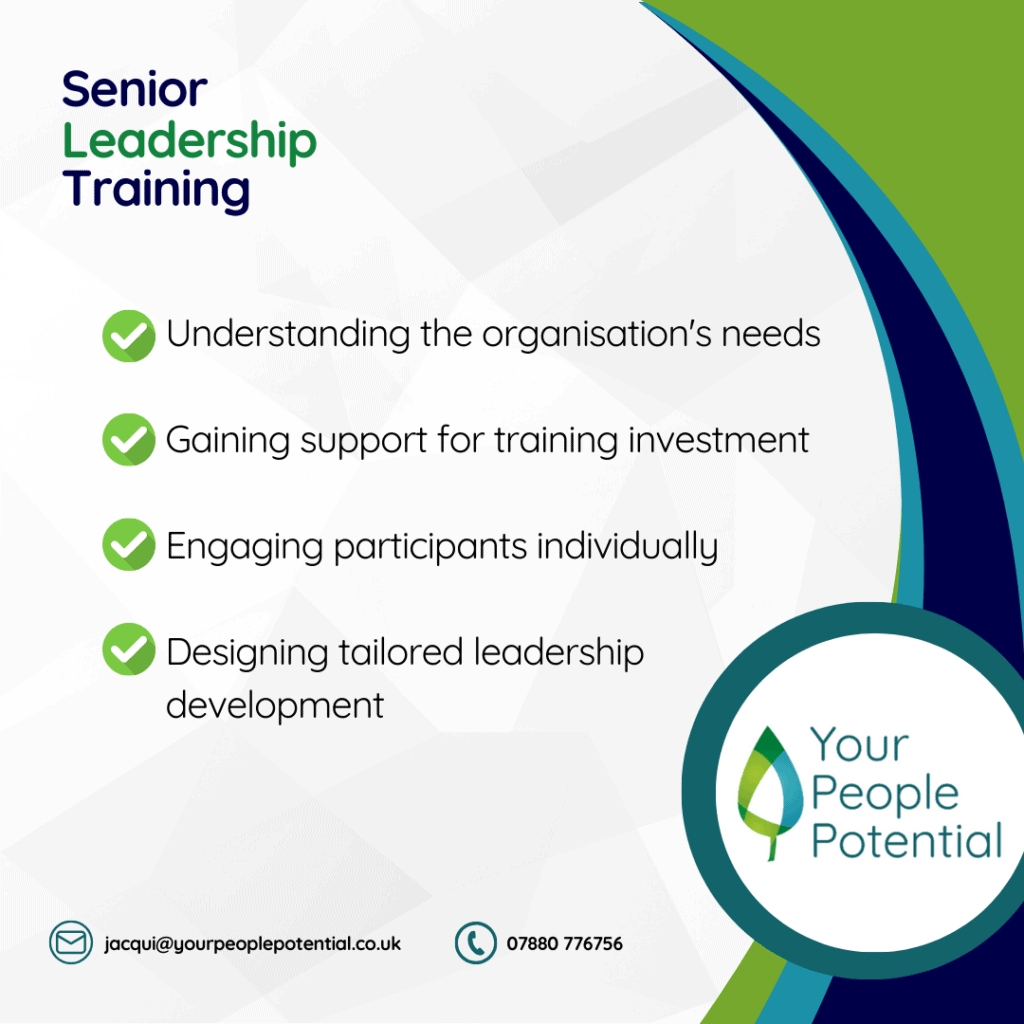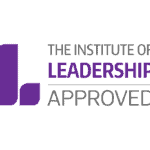
Photo by Sora Shimazaki | Pexels
‘Hang on a minute’, I can almost hear you saying, ‘does that mean we shouldn’t offer leadership training to our senior people?’ Actually, that’s not what I mean. I mean that taking a standard leadership training programme and putting a group of senior executives on it doesn’t work.
And who do I mean when I say senior leaders? Typically, these are people who are running a department in a medium or larger business or anyone above that level. In a smaller business, they’ll typically be the directors.
Our senior leaders need leadership training as much as anyone else. They don’t stop developing or wanting to take on more responsibility, and the world around them definitely doesn’t stand still! To effectively develop leadership skills in our senior executives, we need to take a bespoke approach.

Illustration by Wendy B. | Canva
45% of HR leaders say their organisation struggles to develop effective leaders
The 2019 Future of HR survey by Gartner uncovered the statistic in this sub-heading. That’s a lot of companies without effective leadership training, no leadership talent pipeline, and a lot of HR directors who must be tearing their hair out! If you’re concerned about this in your organisation, you’re not alone.
All levels of managers and leaders need training, no matter how long they’ve been in the job or how senior they are. None of us is the perfect leader already. Here are three main reasons leaders need training through the course of their careers:
- As their responsibilities change, they need to learn to apply skills they already have in a different way. For example, managing a larger team may mean a shift in communication styles. This can be surprisingly difficult – if we’re used to a certain approach getting results in one environment, we can be surprisingly slow to adapt to a new environment on our own.
- We still have a default position in the UK of promoting people into management roles without providing training in the skills required to manage people first. That means lots of managers make it up as they go along. Not offering our managers training means they can reach a senior role and either lack the skills they need or lack confidence in their skills. This creates stress for the individual and, importantly, for the people they’re leading.
- What’s expected of leaders is continually evolving, as is our knowledge about effective management and leadership. In the last 10 years, the importance of fostering the right kind of organisational culture through building psychological safety and showing vulnerability as a leader has grown, and this is changing the skillsets needed by leaders.

Photo 299107828 / Empowering Employees © Andrey Popov | Dreamstime.com
Culture change: You go first; no, you…
So much current leadership thinking emphasises the importance of psychological safety and showing vulnerability. Leaders are now expected to consciously create a supportive and empowering organisational culture, which often means taking the first step themselves.
(And even if they’re not expected to, we know that organisations and their people need this from leaders to support greater wellbeing and higher performance.)
We have to ask the question: How do senior leaders get started? As Brene Brown writes in ‘Dare to Lead’, “Vulnerability cannot be cultivated if it is not ingrained into the culture of an organization and displayed in the actions and words of leadership. An organization without vulnerability cannot stay nimble and innovative, critical factors in today’s competitive business climate.”

Photo 204539799 © Porbanphote | Dreamstime.com
And yet, in an organisation where vulnerability isn’t cultivated, isn’t it incredibly risky for leaders to start showing vulnerability?
Some years ago, I ran a training session with senior leaders, and early on, one leader stated very clearly that they didn’t need the training and weren’t going to learn anything! Unsurprisingly, this shut down the whole group because no one else wanted to admit in front of their peers that they might find the training useful or that they might not have all the answers. I had to change tack to deliver the training and started one to one sessions instead.
Once we’ve reached a certain level of seniority, the prospect of being vulnerable and open to learning can seriously threaten our authority. These participants have to go back to work after the session and continue working together.
How do we build trust and support leaders to be open to learning?

Photo 31454162 © Marek Uliasz | Dreamstime.com
A recent research study charted how senior executives build trust through participating in Action Learning Sets and some of the comments made by interviewees are really interesting.
“It’s just not natural for me to be honest; it’s just not natural for me,” shared one interviewee who eventually opened up in the action learning set group because “… confidentiality was absolutely massive; you wouldn’t get that anywhere else. . . .” It wasn’t just implicit, it was explicit; it [that what they were discussing was confidential] was constantly said.
Another interviewee said,
“I found, me being as honest as what I was, difficult. I found it uncomfortable talking about that [the risk of people losing jobs], particularly when others had similar experiences, so that would have been when it got most uncomfortable. And I think, I think in hindsight, when we started talking about that, that’s when trust developed, because I think we all realised then that if people are that open, and they’re sharing that type of information we’re all from the same community. We all know our respective employers.”

Illustration by Wendy B. | Canva
In the senior leadership training we deliver at Your People Potential, we generally start off with individual meetings to identify what’s important to the individual. This can be followed by coaching sessions to build trust and start to explore being vulnerable with one person, especially an outside trainer who is bound to confidentiality by their ethical framework. By doing this, we can then find out where the gaps are for each leader and build their trust in future programmes of learning.
We then develop a bespoke programme for the group sessions. The topics cover exactly what the specific group of leaders need, and we use an Action Learning Set format. This does two things at once: it builds trust in the group, because they are talking about real challenges in a supportive environment and it also builds each participant’s coaching skills, as they learn by coaching each other. Individual coaching sessions can continue outside of the training, and address specific areas of to address current challenges, and aims to build skills and confidence.
“I think when there was a breakthrough it was definitely linked to emotion, when you felt vulnerable or challenged you made a breakthrough.” (a third interviewee from the research)
One other point about learning is that it often involves feeling emotion. Especially in leadership training it often involves changing how we think about ourselves. Again, showing or sharing their emotions can be tricky for senior leaders and it’s important to design the programme for their needs and facilitate the sessions well. The discomfort can also be addressed in individual coaching sessions, helping leaders to overcome any internal dialogue that is getting in the way of success.
You need an approach that’s tailored for your organisation
So that’s why standard leadership training doesn’t work for senior leaders. They’re often at a position where they don’t feel like they can share their vulnerability and, if they need to build a culture of vulnerability for the organisation, they’re risking a lot each time they try.

Illustration by Wendy B. | Canva
Here’s what we do differently at Your People Potential:
✔️ We work with HR first to understand what the organisation needs and where senior leaders are coming from.
✔️We work with HR to engage with the CEO and/or the budget holders to gain buy-in with investing in training. We can help you make the business case and also support you in the (sometimes) lonely role of championing important leadership development and culture change work.
✔️We get all your participants on board through one-to-one coaching and meetings to understand where they are, what their challenges are and what they need to help them move forwards.
✔️ We put all that together and design a bespoke leadership development programme that will get the results you (and the Board) need, by allowing even the most senior leaders to open up safely.



